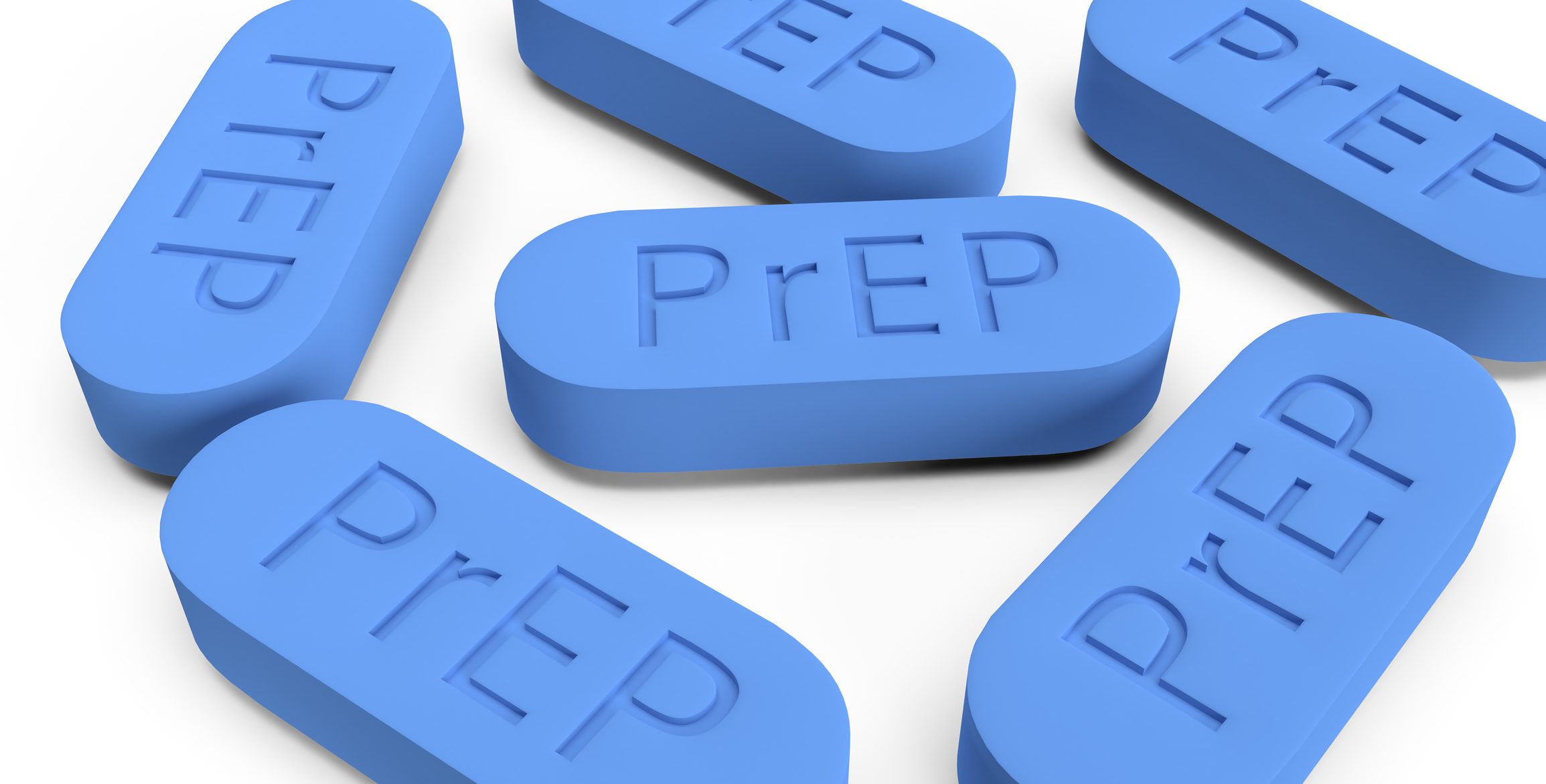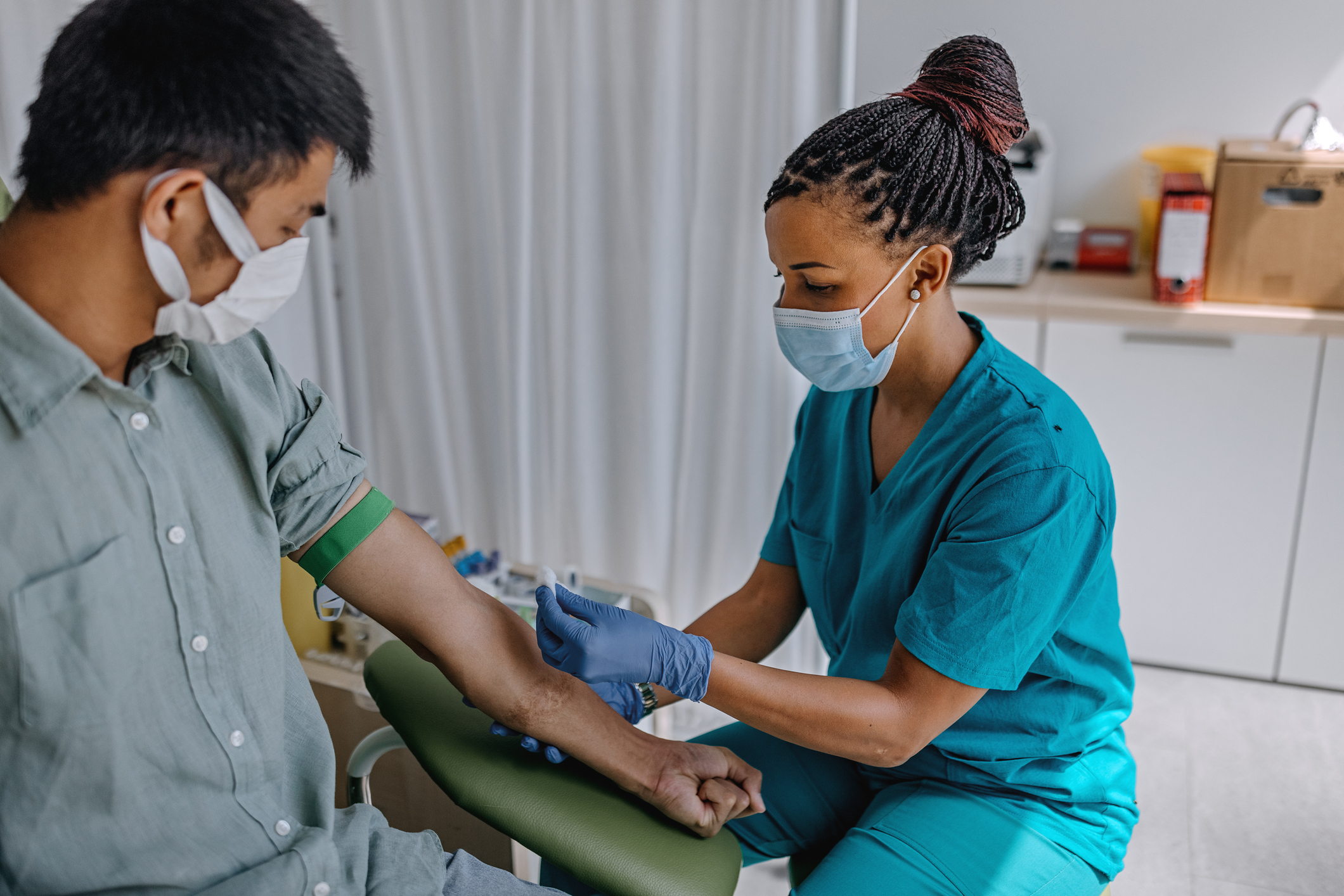As a gay person, the risks of having sex and HIV infection are made readily apparent almost on a daily basis. The conflation between queer sex and HIV infection is one that is not only traumatising but also highly incorrect with today’s medical advancements. Medication available to us today, like PrEP, has enabled us to live healthy and sexually active lives without worrying about HIV.
Despite these medical advancements, PrEP is still widely unheard of outside of LGBTQIA+ communities and it can be hard to find information about it. Even within the community, there is a lot of misinformation about what PrEP does and what it actually protects you from.
So consider this your ultimate guide to the world of PrEP, how to get it and how it works to prevent HIV infections.
Personally, navigating the medical world as a queer person is a pretty scary experience. Luckily, I chatted to Dr Asiel Adan Sanchez from Northside Clinic about PrEP, who it’s for and how it can help our wider rainbow community.
What is PrEP?

For those of you who are unsure what it is or need a refresher, PrEP is a preventative medication that promotes the minimisation of a person’s risk of contracting and becoming infected with HIV.
It is the abbreviated term for pre-exposure prophylaxis. As the name suggests, it is taken by those who do not yet have HIV and have not yet been exposed to it.
PrEP is commonly (and often mistakenly) thought of as birth control for those who are at risk of contracting HIV. The two do share similarities but they obviously work to achieve different goals.
When you take PrEP, it will build up in your system where it will become effective in breaking the replication cycle of HIV. This means that it will reduce the chance of the virus taking hold in your body.
When taken correctly and consistently, PrEP provides an extremely high degree of protection against HIV. Obviously, like birth control or condoms, when it isn’t used correctly or consistently, the rate of protection decreases dramatically and you become more at risk of infection.
There is medication available that is similar to PrEP for those who have already been exposed to HIV called PEP, but we will get into that later.
To access PrEP, you will need a prescription from your doctor.
“At this stage, it’s on the PBS general schedule (meaning) anyone can access it without any restrictions. In an ideal world, it would be accessible to anyone who is concerned about their HIV transmission risk,” Dr Adan Sanchez explained.
Who is PrEP for and am I at risk?
The popular notion is that men who have sex with men (this is the preferred term used in medical literature although its use is somewhat problematic) are the only ones who run the risk of contracting HIV. Whilst men who have sex with other men are known as being part of medium to high-risk communities there are other groups of people who could benefit from taking PrEP.
These communities include gay and other men who have sex with men, transgender people, heterosexual people with an HIV-positive partner who does not have an undetectable viral load, sex workers, some pregnant women, and the intravenous drug-using community.
Guidelines for PrEP usage in Australia have been developed by the Australasian Society for HIV, Viral Hepatitis and Sexual Health Medicine (ASHM). These guidelines consider an individual at high risk if they acknowledge the following:
- Being likely to have multiple events of condomless anal or vaginal sex and/or;
- Regular sexual partner of an HIV-infected person with whom condoms were not consistently used (the partner does not have an undetectable viral load) and/or;
- Have at least one occasion of receptive condomless anal sex
As mentioned, PrEP is used as a preventative medication so it should be taken by anyone who may run the risk of coming into contact with HIV.
Ending HIV has a risk calculator to determine the risk levels of the type of sex you are having.
As always, speak to your doctor about whether or not you fit the guidelines for taking PrEP and if you engage in activities that are considered high-risk.
How to start PrEP
So, what happens now?
After you met the eligibility criteria, there are a few things you’ll need to do both before and during your time on PrEP.
What you’ll do before going on PrEP:
- Have a consult with your doctor about your eligibility, any pre-existing conditions and any questions you may have.
- You’ll then have to get a HIV and STI test and check your kidney levels so your doctor can see if PrEP is right for you.
- Start a month’s dosage.
After your first month on PrEP:
- Have another round of tests for STIs, HIV and kidneys. This way the doctor can see if there are any irregularities.
- Run through any side effects you might be having with your doctor.
- Receive prescription for two months’ dosage.
After your two-month dosage is up, you’ll have to go back to get tested again and receive your prescription for three months.
PrEP prescriptions work in three-month cycles which means that every three months you’ll need to go back to your doctor and get tested and get your prescription refilled.
You should be able to get PrEP from your local pharmacy, provided they have it in stock.
Why so many tests?

It can seem like a lot of testing is going on, and in the first few months, there is. But don’t let it overwhelm you or put you off. It’s extremely important that all these tests occur regularly for different reasons.
HIV test
The reason why you need to be tested for HIV before starting PrEP is that if you are HIV positive and start taking PrEP, the virus may become resistant to antiretroviral treatments. This could then reduce your treatment options in the future.
Being tested for HIV every three months is super important not only because it means you’ll be on the right medication, but also because you know your status and you know that the PrEP is working.
For an HIV test, you’ll need to have your blood tested (usually just one vial).
STI screening
Getting STI checks is also a regular part of the PrEP program. As PrEP doesn’t prevent the spread of any sexually transmitted infections and you would be considered to be sexually active, it is recommended that you have a full sexual health check alongside your three month HIV test.
“Although it might seem intense to be doing them every three months, things like gonorrhoea and chlamydia can be super sneaky and go by completely asymptomatic and completely undetected. Not only is it a good opportunity for us to test and treat any other STIs that might pop up, but also break the chain of transmission,” Dr Adan Sanchez explained.
If you have any untreated infections, it can lead to some pretty serious health complications which you then risk passing on to your sexual partners.
For a complete STI check, your doctor may test your urine, vagina, throat, anus and blood depending on your risk and your sexual practices.
It can be awkward to talk about your sexual activities with your doctor. They don’t need to know the ins and outs (pun intended) of your sexual life but it’s important they know the basic stuff so you can get the right tests.
If you do test positive for any STIs and are worried about having to let your partners know, doctors will often counsel you around contact tracing. As Dr Adan Sanchez told us, your doctor should be able to help you navigate contacting your partner(s), how to do so anonymously, and whether you would prefer your doctor to contact them for you.
I know it can be a pretty scary and awkward thing having to contact any partners you have had about your positive result but it’s these types of measures that help STIs, not just HIV, to decline in the community.
Kidney function
Whilst you’re on PrEP, your doctor may want to test and monitor your kidneys just to keep an eye out for any impacts it may have.
That might seem like a scary thing but as Dr Adan Sanchez assured us it’s relatively rare to have complications with your kidneys as a result of PrEP. More times than not, it will depend on a lot of different factors like pre-existing underlying kidney damage, Type 2 diabetes, high blood pressure or age which is why they are checked before you start taking PrEP.
The good thing about regular testing is that if you do happen to develop problems with your kidneys as a result of PrEP, you can see it coming.
“It is incredibly unlikely someone will develop kidney damage immediately after taking PrEP. It is something that does develop slowly and with time, which is why we also check your kidneys every three months for people that are taking it daily, to make sure that it’s not causing an impact,” Dr Adan Sanchez explained.
Even if there are any problems with your kidneys because of PrEP, once you stop taking the medication your kidney function (in most cases) goes back to normal as though you’ve never taken it before.
PrEP’s active drugs also help treat Hepatitis B so you’ll also be tested for that as well.
How long does it take before I’m protected?
Before we dive into the different ways you can take PrEP, it’s important to note that it takes a bit of time for the medication to build its tolerance in your body so that it can be considered protective.
Although there isn’t a cut clear answer of the exact length of time needed for PrEP to take hold in your system, it’s pretty much agreed that it will take around seven days after starting daily PrEP if it has been taken consistently.
It’s a safe bet to wait until you’ve taken PrEP every day for at least a week without missing any doses before you can assume you have some level of protection against HIV.
According to NSW Health’s PrEP booklet, however, full protection probably shouldn’t be assumed until you’ve taken PrEP for at least 20 days consecutively.

So, how often should I take PrEP?
There are a few different methods you can take PrEP to help protection against contracting HIV.
Each method has the same effect but is designed to make it easier to fit PrEP into your daily life, in whatever way that looks like.
Daily PrEP – Take every day
Daily PrEP is probably the most common way most people take it as it becomes a natural part of your everyday routine.
Taking PrEP daily is best for those who have an active or spontaneous sex life where it’s harder to plan when you’ll need to be protected. It’s also great for those who like to be assured they have protection without having to think about it.
For this method, all you need to do is take one pill a day, every day.
On-Demand PrEP – Take before sex
On-demand PrEP is a little different than the daily regime but still just as effective and is great for people who are either at less risk, have fewer sexual partners or only want to use it when they need it.
If you’re having sex less than twice a week and only a few times a month (or year), on-demand could be an option for you. It is currently only recommended for cis-gendered men who have sex with men. For other people, such as trans and gender diverse folk, have a chat with your doctor.
PrEP on-demand is an episodical three-day course where you take fewer pills but at specific times. It involves double-dosing at least two hours before a sexual encounter then followed by two single doses over the next two days.
Think 2-1-1. So two tablets on the first day, then one tablet on day two and another one on day three.
You can learn more about on-demand PrEP here.
Periodic PrEP – Protection for when you need it
If you’re having a little getaway, event or string of parties that you want to be protected for, Periodic PrEP might be the best option for you.
It’s pretty simple in that you take it daily for a set period of time, whether that be two months or two weeks.
You can learn more about periodic PrEP here.
As with any medication, it’s important that in order for it to be effective, PrEP must be taken as prescribed by your doctor, so have a chat with your doctor about which option is the best for you.
You can also call the PrEP Info Service on 1800 451 624 (Monday to Friday 9am-5:30pm) or ask Ending HIV a question.
What if I miss a dose?
There have been a few times that I’ve forgotten to take my daily dose of PrEP and panicked that I would lose the protection I had already built up. But as Dr Adan Sanchez reassured me, it’s not the end of the world if you do happen to miss a dose:
“There’s some evidence to suggest that four days a week is enough to have good efficacy. Of course, in the guidelines we suggest taking it every single day but there is a little bit of leeway. It’s a very effective medication that will work even if there is a few little missed doses here or there, however, if people are missing it continuously, let’s say more than three days, I would probably suggest giving yourself a full week of daily dosing before having any casual contact again,” Dr Adan Sanchez said.
If you do miss a dose, however, make sure that you are still doing the three-monthly checks and also check for STIs, which are currently on the rise after COVID lockdowns have lifted in Australia.
I stopped taking PrEP during COVID, how do I get back in?
If you’re like me, you might have decided to have a break from PrEP during the many COVID lockdowns we endured. Mostly because romance isn’t really alive and thriving in a global pandemic.
Nonetheless, if that is you, Dr Adan Sanchez thinks it’s probably a good idea that you took a break from PrEP:
“PrEP just hasn’t been around long enough for us to know what the long-term clinical effects, say 10-15 years of daily dosing, so having little breaks here and there is probably not a bad idea.”
If you do want to jump back onto PrEP, Dr Adan Sanchez recommends that you take it for seven days straight before having a sexual encounter so you are well covered.
Taking PrEP as a trans or gender non-conforming person
Although PrEP can benefit everyone within the LGBTQIA+ community, there are slight differences in how people can take it depending on their gender identification.
The three methods of taking PrEP mentioned above are all suitable for cis-gendered gay men and for trans women and trans femme people.
For trans men or transmasculine people, the regime of taking PrEP has to be a little stricter depending on their sexual practices.
“Unfortunately, PrEP is not very good at getting high enough concentration in the vaginal mucosa compared to the anal mucosa.” Dr Adan Sanchez explained.
This means that if a trans man is having predominantly anal sex then they can take PrEP pretty much exactly the same as cis-gay men. However, if they’re having frontal/vaginal sex then they have to take PrEP daily and make sure these daily doses aren’t messed up.
“On demand (PrEP) is just completely off the table, unfortunately, because we don’t have enough data to suggest that it works quite as well for trans men or trans masculine people,” Dr Adan Sanchez said.

Are there any side effects of taking PrEP?
Much like many other medications, PrEP comes with a few side effects which mostly occur within the first few months of taking it.
The most common short-term side effects, listed here at Ending HIV, are nausea, headaches and diarrhoea.
According to Dr Adan Sanchez, it’s common for people to have an upset stomach in the first few weeks. This includes stomach cramping, bloating and irregular bowel movements which should settle down within four to six weeks of using PrEP.
Some people on PrEP do experience ongoing abdominal discomfort which is something you can navigate with your medical practitioner if that happens to you.
Apart from the short-term side effects, there are also a few longer-term impacts that PrEP may have on your body.
These mostly relate to your liver and health as well as your bone density.
While these may seem like pretty scary side effects, they aren’t anything to be overly concerned with, according to Dr Adan Sanchez.
“For most people that are on PrEP, bone density will drop by a tune of about 1%. For the general population on PrEP who are fit, young and healthy, that 1% isn’t clinically relevant. It doesn’t mean that you’re going to develop bone disease in the future. It doesn’t mean that you’re going to have a fracture once you start on PrEP,” Dr Adan Sanchez explained.
If you’re having issues with your bone density as a result of PrEP, once you stop taking it you’re bone health pretty much goes back to normal, similar to the kidneys.
Beyond the common short and long term effects PrEP may have, there are also a few anecdotal ones that Dr Adan Sanchez calls ‘the wildcard effects’ which will affect a very small minority of people.
For each of these effects though, whether it be dizziness, stomach ulcers or fatigue, once the person stops taking PrEP these side effects stop almost immediately, so it’s important to note that PrEP doesn’t have many permanent, irreversible effects on your health.
What’s PEP?
Post-exposure prophylaxis (PEP) is a four-week course of HIV treatment that will help prevent someone from infection.
Unlike PrEP (which is treatment before exposure) PEP is to be taken after you may have been exposed to HIV.
When you take PEP, the cells that were originally infected will die off naturally within a short period of time.
If you do believe that you’ve been exposed to HIV, start PEP as soon as possible, even within the first few hours after the possible exposure.
PEP will likely become ineffective if it is not started within 72 hours of exposure.

What if I get HIV?
If you do test positive for HIV, you should talk to your doctor about treatment options right away. There are plenty of methods available today which have made HIV an incredibly manageable condition.
Many of these methods work to suppress the virus to an undetectable viral load which enables thousands of people to live longer, healthier lives.
For more information about HIV infection, check out NSW Health’s fact sheet. If you’ve recently been diagnosed with HIV, Ending HIV offers support for coming to terms with your diagnosis.
Some barriers to getting PrEP
While rates of HIV transmission have dropped in MSM communities, Dr Adan Sanchez noted that we are seeing the opposite trend for MSM who were born overseas. This is mostly because they don’t have access to Medicare so PrEP becomes incredibly expensive.
Beyond that, PrEP is still largely inaccessible to transgender and gender diverse people despite them being part of the more vulnerable and marginalised populations in the country. This also is the case for Aboriginal and Torres Strait Islander people.
For Dr Adan Sanchez, healthcare services need to put in a lot of work to create safe, inclusive and culturally competent environments so all people can feel that the medication is accessible to them.
There are a few possible ways of achieving this, but for Dr Adan Sanchez the most effective is doing community outreach work and informing marginalised communities about PrEP and HIV.
“Even translating their materials to other languages so people can access them in their own native language. Reaching out with trans and gender diverse groups, and kind of making sure that they’re aware that it’s (PrEP) here, and it’s for them and they should consider taking it,” Dr Adan Sanchez explained.
While it can seem like a daunting experience, both the medication and the routine testing for PrEP not only help you but also the wider community.
PrEP is just one of the many effective ways we as a queer community can help get to a zero HIV transmission future and protect all of us from the virus that once took so many lives.
Friendly reminder: PrEP is designed to be taken alongside other safe sex measures, like condoms, so to have full safety and security, make sure you’re having safe, consensual sex.

Leave a Reply
You must be logged in to post a comment.